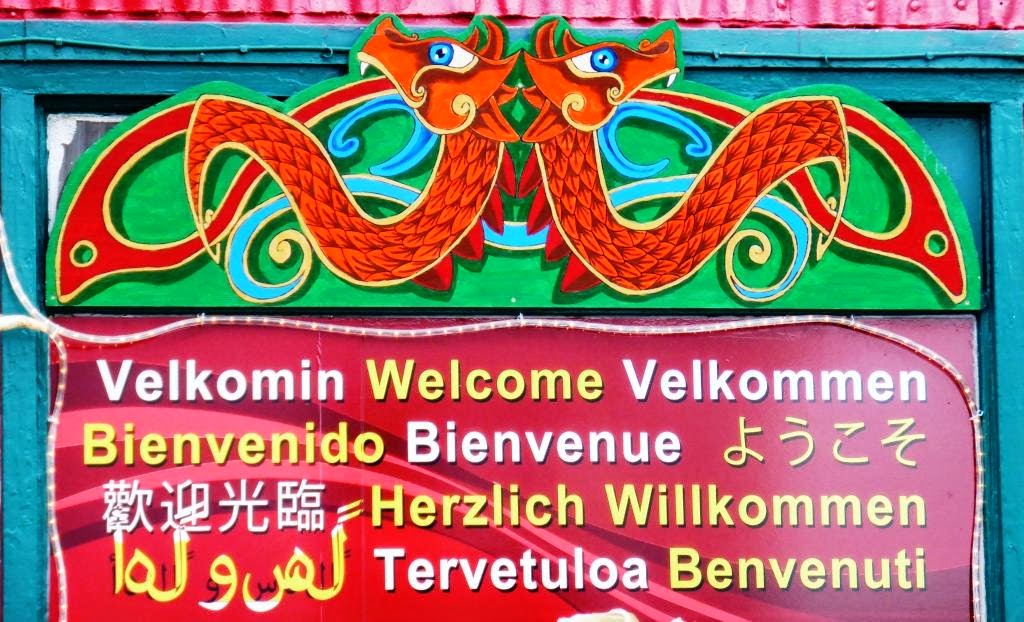- Swedish: hej (hello), tack (thank you)
- Icelandic: halló (hello), takk (thank you), Þetta reddast (she'll be right mate)
- Finnish: hei (hello), kiitos (thank you)
 |
| A sign in downtown Reykjavik |
 |
| Herkullissia marjoja (the delicious berries) of Suomi (Finland) |
 |
| Helsingin tuomiokirkko, Suurkirkko in Helsinki |